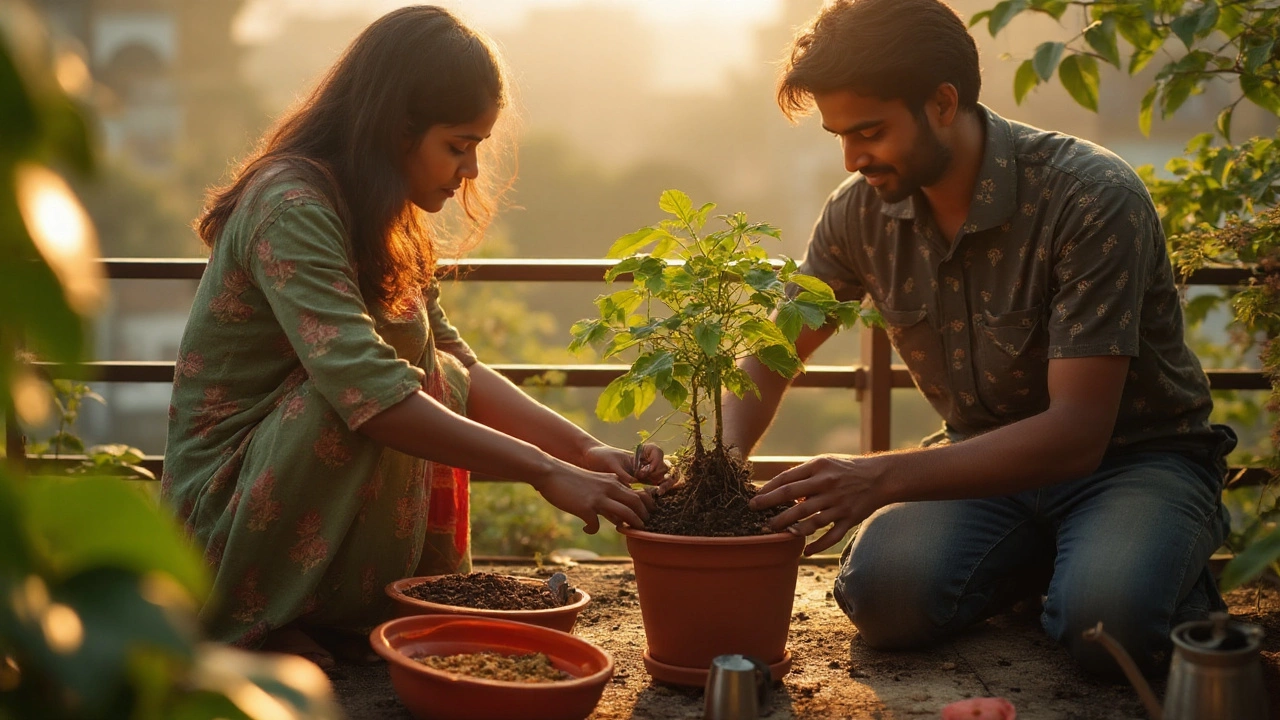The clear rules of thumb for container gardening: pot size, soil mix, watering, light, and feeding. Quick cheats, examples, and fixes for common mistakes.
Pot Size Matters: How Container Size Affects Plant Health and Growth
When you pick a pot size, the physical space available for a plant’s roots to grow and access water and nutrients. Also known as container size, it directly controls how well your plant thrives—or struggles. Too small, and your plant becomes root-bound, stunted, and thirsty. Too big, and the soil stays wet too long, inviting rot and mold. In India’s hot, dry spells and heavy monsoons, getting this right isn’t optional—it’s the difference between a thriving balcony garden and a pile of dead leaves.
Soil drainage, how quickly water moves through the growing medium is tightly tied to pot size. A large pot with poor drainage is a disaster waiting to happen, especially in clay-heavy Indian soils. On the flip side, a tiny pot dries out in hours under the summer sun. That’s why hydrangeas on balconies often fail—not because of sunlight, but because they’re stuck in pots too small to hold enough moisture. And it’s not just hydrangeas. Tomatoes, basil, even zinnias all need room for their roots to spread. A root bound, a condition where roots circle tightly inside a container, choking the plant’s growth plant can’t take up nutrients efficiently, no matter how much fertilizer you add.
People think bigger pots are always better, but that’s not true. A 12-inch pot for a single basil plant is overkill—it just holds too much water. A 6-inch pot for a tomato? You’ll be watering twice a day and still watch it wilt. The sweet spot? Match the pot to the plant’s natural root system. Herbs like basil and mint do fine in 8-inch pots. Vegetables like peppers and eggplants need at least 12 inches. And for plants like hydrangeas that need consistent moisture, go for 14 inches or more with good drainage holes. It’s not about aesthetics—it’s about biology.
You’ll also notice how pot size affects compost use. In small pots, you need lighter, faster-draining mixes—think perlite and leaf mold. In large pots, dense soil becomes a problem. That’s why gardeners who fix dense soil often start by switching to the right container. It’s not just what you add to the soil—it’s how much space you give it to work.
And here’s something most overlook: pot size changes how you water. Small pots need frequent, light watering. Large pots need deep, less frequent soaking. If you treat them the same, you’re either drowning roots or starving them. This is why drip emitters often fail in container gardens—they’re set for fixed schedules, not variable pot sizes.
By now, you can see how pot size connects to almost every other gardening decision you make. It influences your choice of soil, your watering routine, your plant selection, and even your success with pests like rabbits—because a healthy, well-rooted plant is less likely to get eaten. The posts below cover exactly this: how to pick the right container for hydrangeas, why tomato pots need to be deep, how balcony orientation affects moisture loss in pots, and how to fix overwatered plants by repotting into the right size. No fluff. Just real, tested advice from Indian gardeners who’ve learned the hard way.
